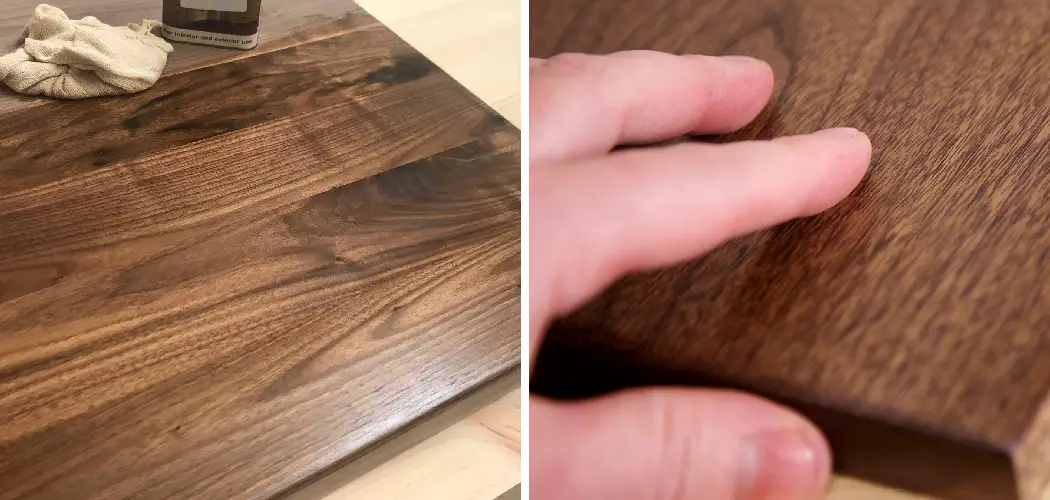Walnut is a common type of wood that can be stained or painted to achieve different finishes. It is also one of the most durable types of wood and does not fade quickly when exposed to sunlight. However, if you want to take extra precautions to keep your walnut from fading, there are some things you can do. In this article, we will discuss how to keep walnut from fading and looking fresh for years to come. Stay tuned!
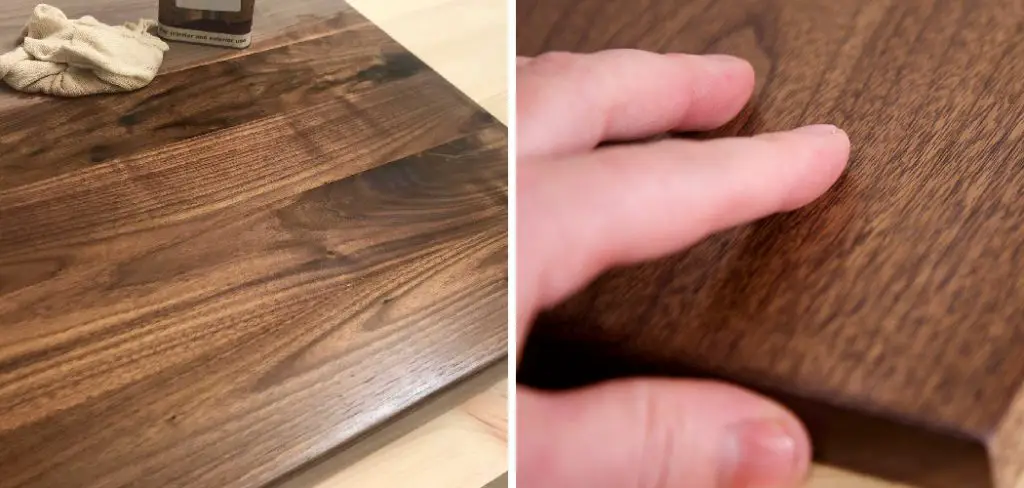
We love walnut for its classic and timeless look. It’s a beautiful wood that can be used in various ways, from flooring to cabinetry. Walnut is also one of the most durable types of wood, making it ideal for high-traffic areas. Although it is a durable wood, walnut can still fade over time if exposed to direct sunlight. Many people choose to stain or paint their walnuts to help protect them from fading. However, if you want to take extra precautions to keep your walnut from fading, there are some things you can do.
What is Fading?
Before we dive into how to prevent fading, let’s first understand what it is. Fading is the gradual change in color or pigmentation of an object due to exposure to light. In the case of walnut, fading occurs when the wood’s natural oils and tannins are broken down by UV rays from sunlight. This can cause the wood to lose its rich color and become dull and lackluster.
It’s important to note that fading is a natural process and will happen to all types of wood over time. However, you can take steps to slow down this process and keep your walnut looking fresh for longer.
Why Does Walnut Wood Fading Over Time?
Walnut is a beautiful wood that can add a touch of elegance to any home. However, walnut can start to fade and lose their luster over time. There are several reasons why this happens, but the most common culprit is direct sunlight. UV rays from the sun can damage the wood and cause it to fade. Other factors such as humidity, heat, and water can also fade.
1. Sunlight:
Prolonged exposure to direct sunlight can cause fading in any wood, and walnut is no exception. If you have walnut furniture or trim in a sunny room, you may notice the color gradually lightening over time.
2. Heat:
In addition to sunlight, heat from sources like fireplaces and radiators can also cause fading in walnut wood.
3. Humidity:
High humidity levels can cause fading as the wood absorbs moisture from the air. This can be especially true in rooms with poor ventilation.
4. Cleaning Products:
Certain cleaning products and polishes can contain chemicals that can damage the finish of walnut wood and cause it to fade. Always test a small area before using any new cleaning products on walnuts.
A Detailed Guide on How to Keep Walnut From Fading
Step 1: Determine What Type of Wood You Have
There are two types of walnut wood: American black walnut (Juglans nigra) and English walnut (Juglans regia).
Determining which type you have is essential, as the two require different care methods. You can usually tell which type you have by looking at the grain pattern; American black walnut has a more distinct, darker grain, while English walnut has a lighter, more diffuse grain. If you’re still unsure, take a small sample of your wood to a local lumberyard or hardware store for help identifying it.
You can also check the age of your wood as older walnut tends to darken over time, regardless of type. It’s essential to know your wood type and age to choose the right products for maintaining its color and finish.
Step 2: Clean the Surface
Once you know what type of wood you’re working with, it’s time to clean the surface. For American black walnut and English walnut, start by sweeping or vacuuming away dirt or debris. If there’s any build-up on the surface, you can clean it with a mild soap and water solution; be sure to rinse it off entirely afterward.
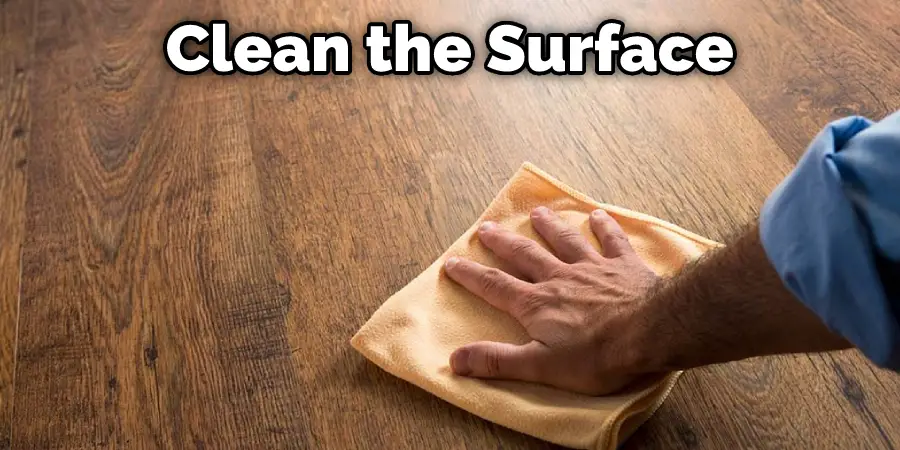
But be careful; too much water can cause wood to swell and warp. Instead, use a damp cloth or sponge and only spot-clean areas that need it. The goal is to remove any dirt or grime that can act as an abrasive and cause discoloration or scratches on the wood.
Step 3: Apply a Pre-Stain Conditioner (Optional)
If you’re planning on staining your walnut wood, it’s good to apply a pre-stain conditioner first. This will help the stain go on evenly and prevent blotching or unevenness.
Applying a pre-stain conditioner is optional, but it can help prevent the wood from absorbing too much stain and becoming uneven. To use, wipe on the conditioner with a clean cloth, following the grain of the wood. Allow it to sit for about 15 minutes before wiping off any excess with a clean, dry cloth. You should do this step even if you are using a water-based stain. You can find pre-stain conditioners at most home improvement stores.
Step 4: Stain or Seal the Wood
Once the surface is clean and you’ve applied a pre-stain conditioner (if desired), it’s time to either stain or seal the wood. Staining will add color to the wood while sealing will protect it from fading and other damage.
If you’re staining the wood, choose a specifically designed stain for use on walnut. Apply the stain evenly with a clean cloth, following the wood grain. Allow the stain to sit for about 10 minutes before wiping away any excess with a clean, dry cloth.
If you’re sealing the wood, choose a sealer compatible with the type of finish you want. For example, if you want a glossy finish, choose a sealer designed for use on glossy surfaces. Next, apply the sealer evenly with a clean cloth, following the grain of the wood. Allow the sealer to sit for about 10 minutes before wiping away any excess with a clean, dry cloth.
Step 5: Apply Finishes That Have Uv Inhibitors
Applying a finish with UV inhibitors is a great way to protect your woodworking project from the sun’s harmful rays. UV inhibitors are available in both clear and tinted formulas, so you can choose the level of protection that you need. When applying a finish with UV inhibitors, carefully following the manufacturer’s directions is essential.
In most cases, you will need to apply multiple coats to achieve the desired level of protection. Once you have applied the finish, allow it to dry completely before exposing the project to sunlight. By taking these simple precautions, you can ensure that your project will look great for years to come.
Step 6: Move Furniture and Rugs Regularly
Your walnut wood furniture and floors will fade even with the best care. To help prevent this, regularly move furniture and rugs around. This will allow the sun’s rays to evenly distribute over the surface of the wood, preventing any one area from becoming too light or dark.
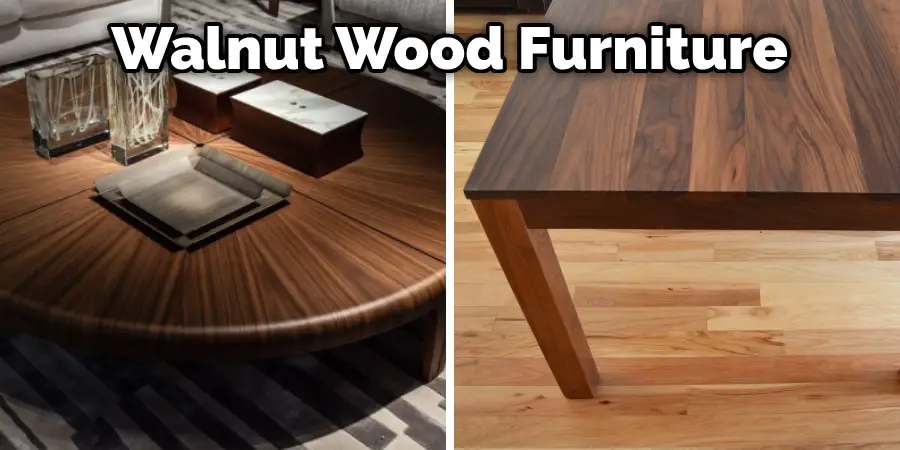
When moving furniture, be sure to lift it rather than drag it across the floor. This will help prevent scratches and other damage during the moving process. The same goes for rugs; be sure to lift and move them instead of dragging them across the floor.
Step 7: Apply Window Films or Tints
If you’re worried about the sun’s harmful rays causing your walnut wood to fade, you can apply window films or tints to your windows. This will help block out the sun’s rays, preventing them from coming into contact with the wood.
Applying window film is a simple process, but it’s essential to carefully follow the manufacturer’s directions to get the best results. In most cases, you will need to clean the surface of the window before applying the film. Once the film is in place, trim away any excess material. It’s also essential to regularly clean the window film to prevent it from becoming discolored or damaged.
Step 8: Use Rugs and Curtains
Rugs and curtains are not only incredible for protecting your floors and furniture from the sun’s rays, but they can also help add a touch of style to your home. When choosing rugs and curtains, be sure to select those made from materials that will not fade in the sun.
Cotton, wool, and synthetic fibers are all good choices for sun-resistant fabrics. If you’re unsure about which fabric to choose, be sure to ask a sales associate for help.
Step 9: Keep Your Wood Clean and Polish It Regularly
One of the best ways to protect your walnut wood from fading is to regularly keep it clean and polished. Dusting and vacuuming your floors every week will help remove any dirt or debris that can cause the wood to become dull. In addition, polishing your wood furniture with a quality furniture polish will help it retain its natural luster.
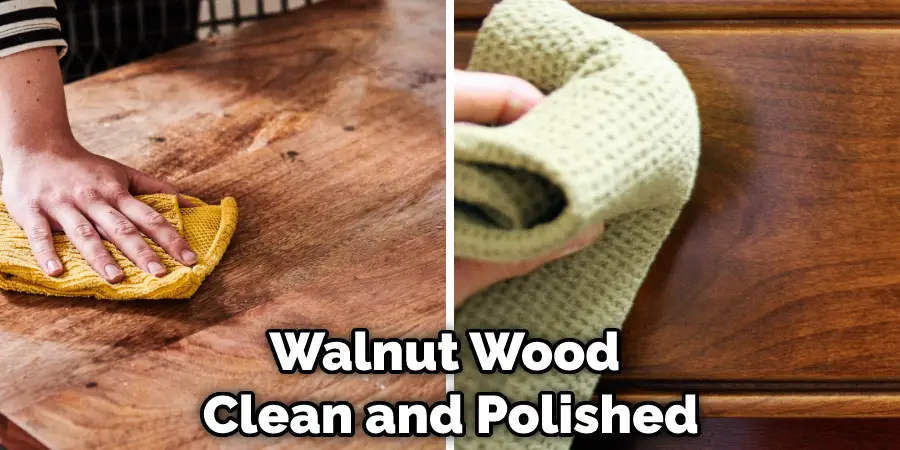
When cleaning and polishing your walnut wood, be sure to use products specifically designed for use on wood. Using harsh chemicals or abrasive cleaners can damage the finish of your wood, making it more susceptible to fading.
Step 10: Consider Professional Refinishing
If your walnut wood has already faded significantly, or if you’re looking to give it a fresh new look, consider hiring a professional for refinishing. A professional will have the expertise and tools necessary to strip away any old finish and apply a new one evenly.
Refinishing can be a bit expensive, but it’s worth it to revive the natural beauty of your walnut wood. Plus, by following the above steps to protect your wood from fading, you may be able to prolong the need for professional refinishing.
Overall, taking proper care of your walnut wood will not only protect it from fading but also help maintain its beauty and durability for years to come. So whether you’re working on a woodworking project or have walnut wood furniture and floors in your home, following these steps will help ensure that they stay looking their best.
Following these tips will not only benefit your walnut wood, but it can also be applied to other types of wood as well. By understanding how sunlight affects different types of wood and taking the necessary precautions, you can preserve the natural beauty of all the wooden pieces in your home.
Tips and Warnings:
Tips:
– Keep your walnut in a cool, dry place.
– Do not expose it to direct sunlight or heat.
– If you are using a treated wood sealer, make sure it is compatible with the finish you are using.
– Be sure to follow the manufacturer’s instructions for application and curing times.
– Inspect your walnut regularly for signs of fading or damage and take action to correct the problem as soon as possible.
Warnings:
– Do not use oils or waxes on your walnut, as these can cause the finish to become sticky and attract dust and dirt.
– Do not allow water to stand on your walnut for extended periods, as this can damage the wood.
– Do not use harsh chemicals or cleaners on your walnut, as these can damage the finish.
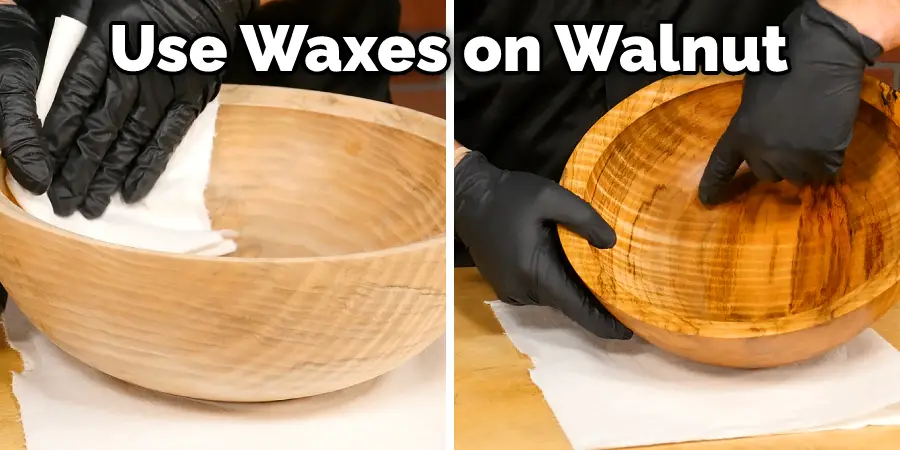
If you take proper care of your walnut furniture, it will last for many years and retain its beauty. By following these steps and tips, you can enjoy your walnut wood without worrying about it fading or becoming damaged by sunlight.
Alterations and Refinishing:
Over time, even with proper care, your walnut wood may begin to show signs of fading or wear. In this case, you can consider altering or refinishing the piece to bring it back to its former glory.
Alterations:
- Lightly sanding and re-staining the wood can help restore its color and appearance.
- Adding a new protective finish on top of the existing one can help protect the wood from further fading or damage.
- Replacing old or damaged hardware, such as drawer pulls or hinges, can also give your piece a fresh new look.
Refinishing:
If you want to completely change the appearance of your walnut wood, refinishing is a great option. However, it should only be done by a professional or someone with experience in wood refinishing, as it can be a complex and time-consuming process.
- Stripping away the old finish with chemical strippers or sanding it off can expose the natural wood underneath.
- Once the old finish is removed, you can choose to stain the wood a different color, add a new protective finish, or leave it unfinished for a more natural look.
- Refinishing is a great option if you want to update the style of your walnut wood or if it has significant damage or fading that cannot be fixed with alterations.
By taking care of your walnut wood and knowing how to protect it from sunlight, you can enjoy its beauty for years to come.
Frequently Asked Questions:
Q: Can I Use Any Type of Finish on My Walnut Wood?
A: No, it’s important to choose a finish that is specifically designed for use on wood. Using the wrong type of finish can damage your walnut wood. You should also consider using a finish with UV inhibitors to protect it from fading. It’s always best to follow the manufacturer’s recommendations for the specific type of wood you are using. It’s also important to note that different types of wood may require different finishes, so be sure to do your research before applying any finish to your walnut wood.
Q: How Often Should I Refinish My Walnut Wood?
A: This varies depending on the amount of use and exposure to sunlight your walnut wood receives. It’s recommended to inspect your furniture and floors regularly for signs of fading or damage. If you notice significant fading or wear, it may be time to consider refinishing. Otherwise, regular cleaning and maintenance should help prolong the need for refinishing.
Q: Can I Use Water-Based Cleaners on My Walnut Wood?
A: It’s best to avoid using water-based cleaners on your walnut wood as they can cause damage and discoloration. Instead, stick to using products specifically designed for use on wood. If you’re unsure about a particular cleaner, it’s always best to test it in an inconspicuous area first before using it on the entire surface.
Q: Can I Refinish My Walnut Wood Furniture Myself?
A: While it is possible to refinish your walnut wood furniture yourself, it’s important to have the necessary knowledge and tools to do so properly. It’s also important to follow safety precautions when working with chemicals and finishes. If you are unsure about how to properly refinish your furniture, it may be best to hire a professional to ensure the job is done correctly. Finally, always remember to take extra care when handling and moving your walnut wood furniture to avoid any potential damage.
Conclusion:
So, how do you keep walnut from fading? By following these simple tips, you can ensure that your furniture looks beautiful for years to come. First, use a good quality sealant or wax on the wood. Second, avoid exposing the furniture to direct sunlight. Third, dust and clean it regularly. Fourth, dry it immediately and treat the area with a sealant if any water damage occurs. Fifth, re-wax or reseal the furniture every few years to maintain its color and shine. By following these easy steps, you can keep your walnut furniture looking fabulous for many years!
You Can Check it Out to Make a Door Look Like Wood
You May Also Read: How to Make Cardboard Look Like Wood

